Ask any muscle car enthusiast about their favorite Chevrolet, and there’s a pretty good chance you’ll hear the name “Chevelle SS” spoken with excitement. It’s a great answer, too, because the Chevelle SS, especially with the 454 cubic inch V8, is practically muscle car royalty, one of GM’s most iconic cars. However, not everyone could afford the Chevelle SS, which got as expensive as $4,800 when it was new. But speed-obsessed Chevy had an option for folks on a budget. Meet the two-year-only Heavy Chevy. When properly equipped, this Chevelle derivative was most of the SS for a lot less money. Despite the allure of cheaper speed, more people went for the fabled SS. Let’s take a look at this rare performance special.
When car enthusiasts are minted as kids, bedroom walls become filled with posters of dream cars, and if that kid is serious enough, they might even work toward owning their favorite poster car after growing up. Unfortunately, life rarely follows the ideal path. Maybe your childhood dream car skyrocketed in price, and adult-you has about the same chance at owning the dream as kid-you did.
I get it; one of my dream cars is an early Audi R8 V10, and despite the fact that these cars have been around since 2009 and I’m making more money than I ever have, I still cannot afford one. Alternatively, maybe an automaker comes out with a car that you really want today, but it’s out of reach. That’s where I am with the Ford F-150 FP700.
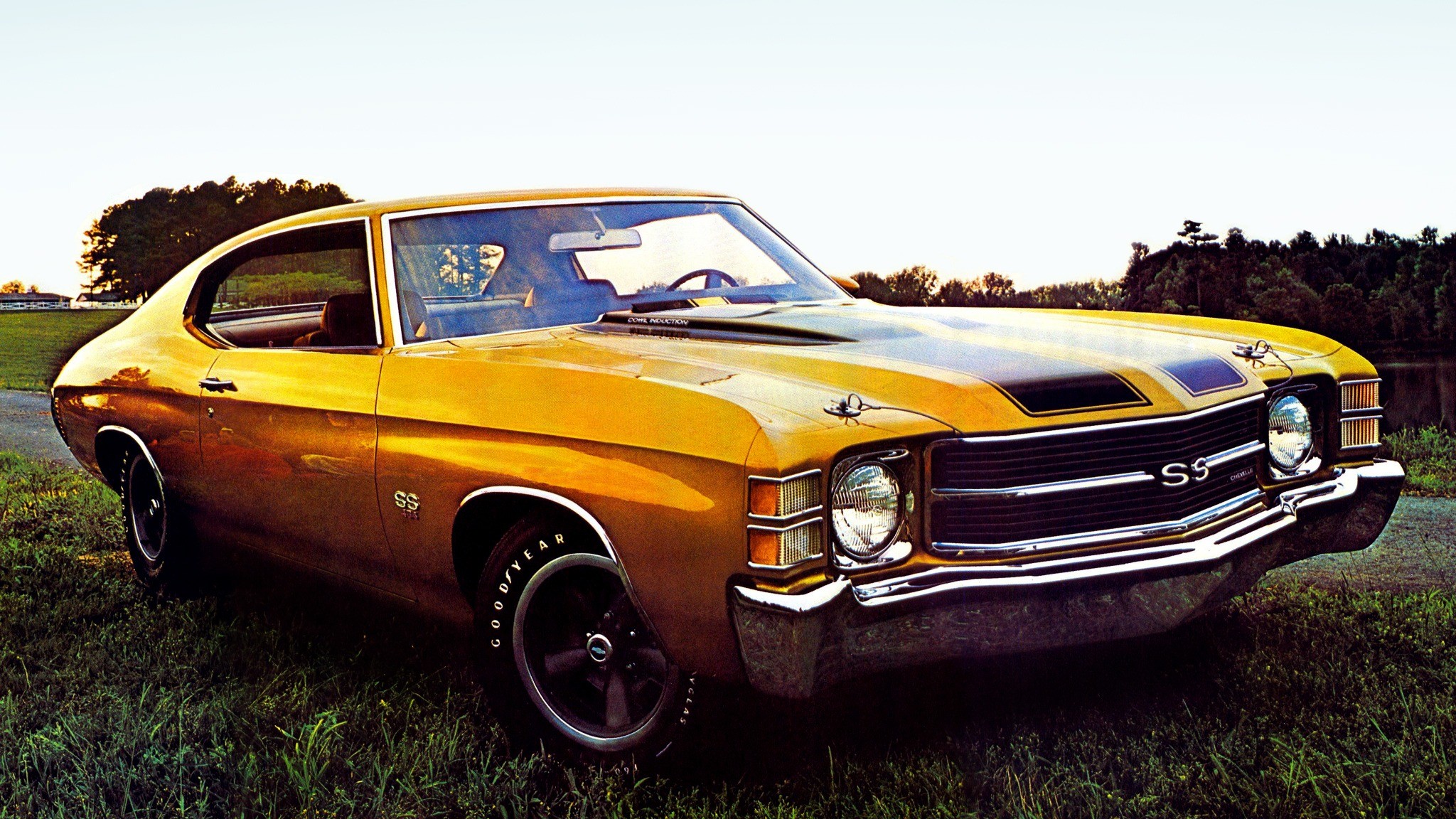
Sadly, the Chevrolet Chevelle SS is one of those classic cars that have only gotten more expensive over time. The peak of the Chevelle, the hot 1970 Chevelle SS with a 454 cubic inch V8 making 450 gross HP, was about $4,800 when it was new, or about $41,021 in 2025. Chevelle SS prices can be all over the place today, but you could reasonably expect to pay over $50,000 for a decent Chevelle SS from your bedroom poster and sometimes over $100,000 if you want a minty example with numbers-matching everything, rare options, and all sorts of documentation.
Back during the muscle car era of the 1960s and early 1970s, automakers knew that not everyone could afford their hyper-fast flagship muscle cars, especially younger car buyers. Automakers have long desired to pump up their sales by driving younger customers into showrooms, but these buyers are a tough demographic to crack. Young folks often want style and performance, but either don’t have the cash to buy a full-fledged muscle car, or they do have the cash, but end up in a BMW showroom instead.
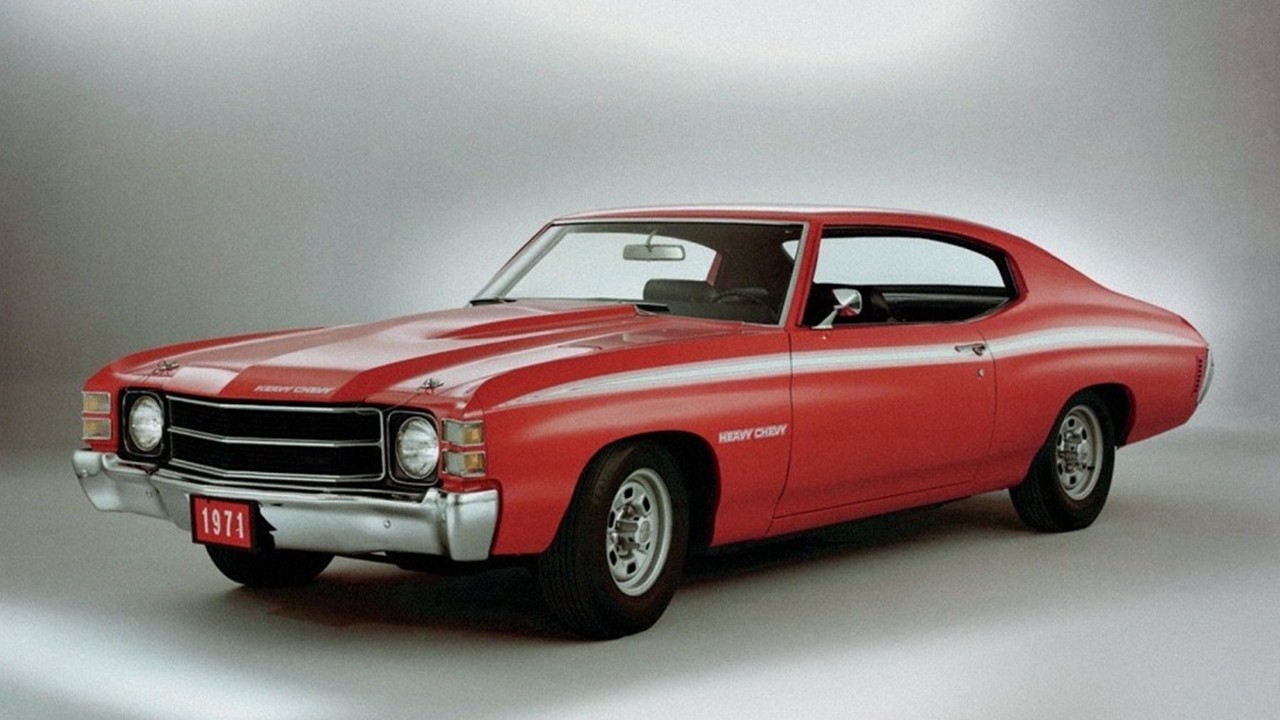
In 1970, Chevrolet had an idea to get young buyers to darken its showrooms. What if it sold a Chevelle with muscle car looks and the option for real muscle car performance, but for a discount price?
Chevy’s Once-Hot Intermediate
According to the book Chevrolet SS by Robert Genat, the 1960s brought on an era where domestic automakers competed to build the best smaller car. In the early 1960s, Chevrolet put the Chevy II up to bat against the Ford Falcon, and the Blue Oval was eating the Bowtie’s lunch. Then in 1962, the Ford Fairlane became a mid-size car, squeezing in between the smaller Falcon and the larger Galaxie. Across town, domestic rivals included Plymouth Belvedere and the later AMC Rambler.
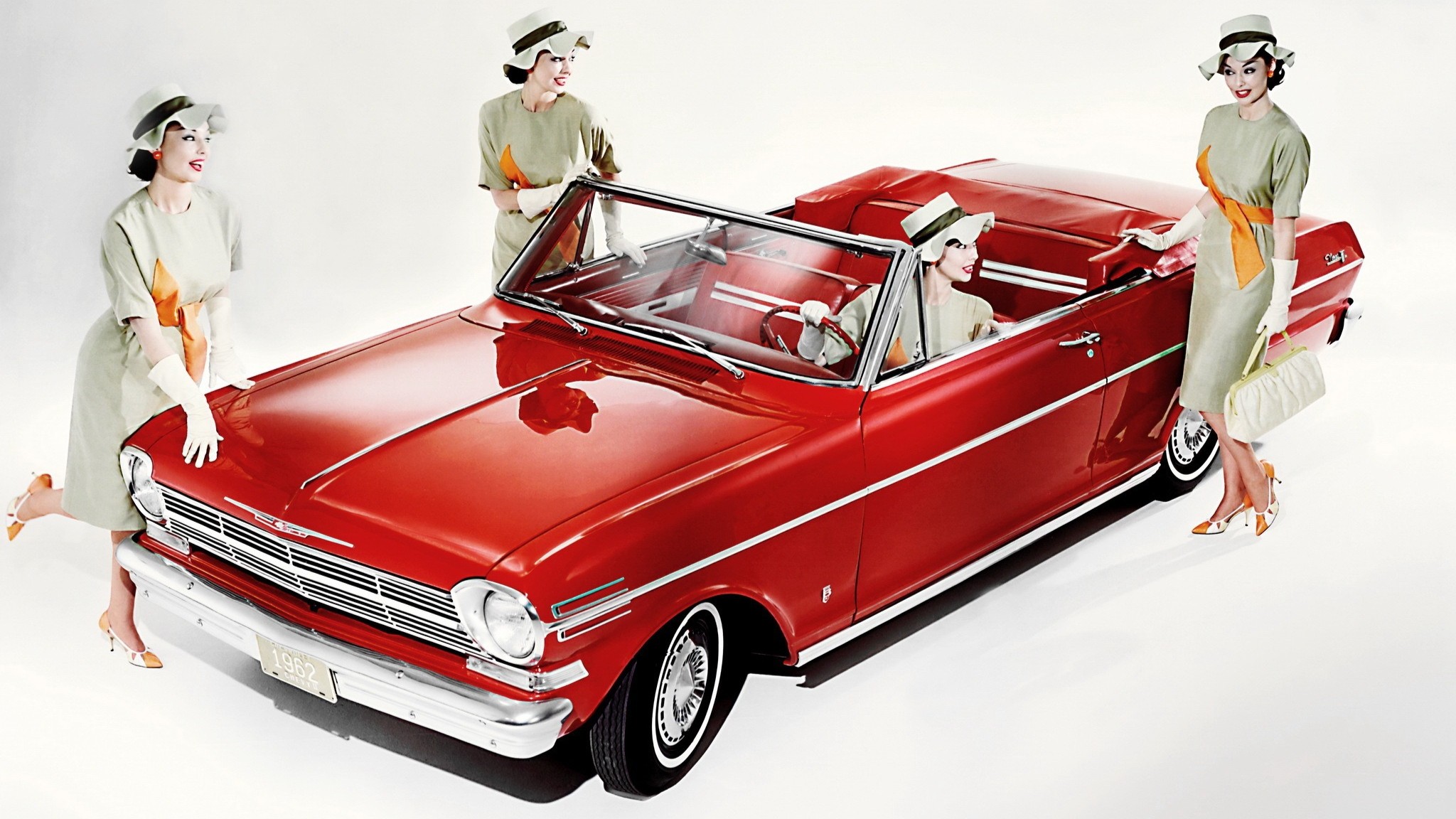
We would call cars like the Fairlane and the later Belvedere “mid-size” today, but back then, they were known as “intermediate” cars. The terms more or less translate to the same thing: a car that is smaller than full-size but larger than a compact. However, it’s notable that there’s not exactly a defined limit for what makes a car an intermediate. As cars have grown throughout time, new mid-size cars have often surpassed the dimensions of the full-size cars of old.
As the Petersen Automotive Museum writes, the birth of the Chevelle wasn’t just to have something to compete in the growing intermediate market. In 1957, The Petersen writes, the Automobile Manufacturers Association had banned manufacturer-backed racing after a string of fatalities. One particularly gruesome crash happened in 1955, when a disaster at the 24 Hours of Le Mans led to the deaths of at least 80 spectators and driver Pierre Levegh. Apparently, General Motors kept racing, anyway. That was until 1962, Chevy Hardcore writes, when pressure from the U.S. government and a threat of antitrust litigation from its competitors convinced GM to drop its racing activity.
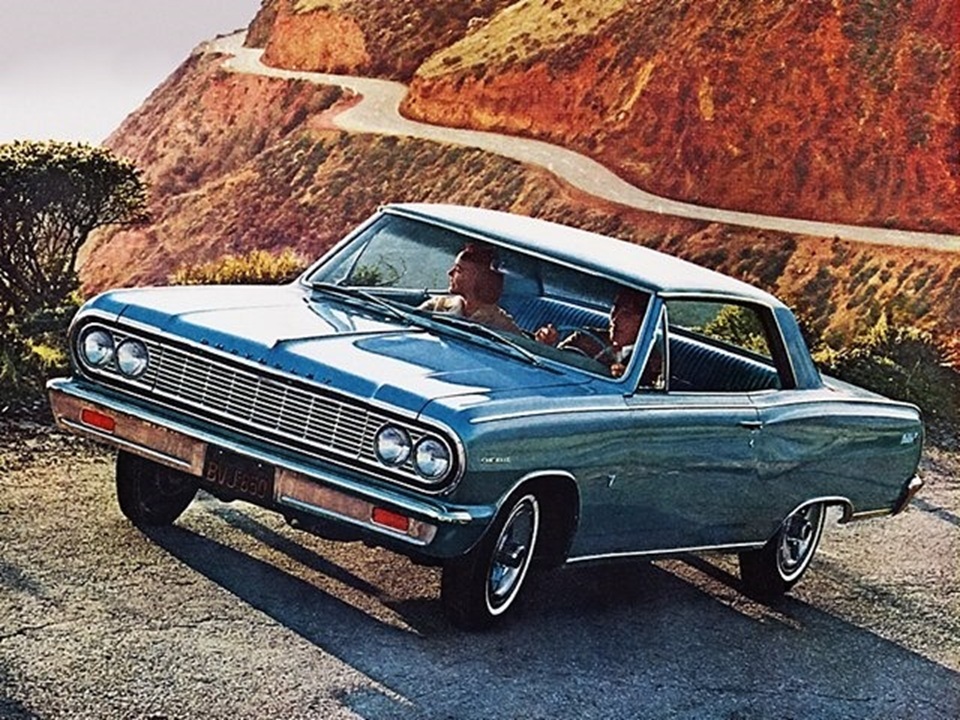
So, how do you sell cars on Monday when you are no longer winning on Sunday? Well, as The Petersen notes, you take the horsepower to the streets and get consumers in high-powered cars. My retrospective on the Chevelle Malibu SS continues about the origins of the Chevelle:
Chevrolet didn’t really have a good match for this expanding intermediate market and cooked up the Chevelle to toss into the ring. It rode on the body-on-frame, rear-wheel-drive A-platform, which slotted in above the Chevy II but under the year’s full-size Impala. Chevy launched the Chevelle in 1963 and in its early days, a Chevelle 300 represented the frugal end of the spectrum while a Malibu was the cushy high-end model. In addition to having both lower and higher-end options, the Chevelle was also available in a wide variety of body styles. You could order your Chevelle as a two-door hardtop, a four-door hardtop, a two-door coupe, a two-door convertible, a two-door sedan, a four-door sedan, a two-door wagon, a four-door wagon, and a coupe utility based on the two-door wagon.
Whew! And yes, the coupe utility in question is none other than the El Camino. For those who wanted a bit more spice in their Chevelles, Chevy offered the Malibu SS. Base Malibu SS models had a 283 cubic inch V8 rated for 195 HP while the top optional V8 was a 327 with 300 HP. In 1965, power rose even further to 350 HP thanks to the 327 cubic inch L79 small-block V8. Chevrolet offered a Chevelle for just about everyone and it’s no surprise that Chevy moved 338,286 units that first year alone. The Chevelle would go on to get a new body in 1966 and a new generation in 1968.
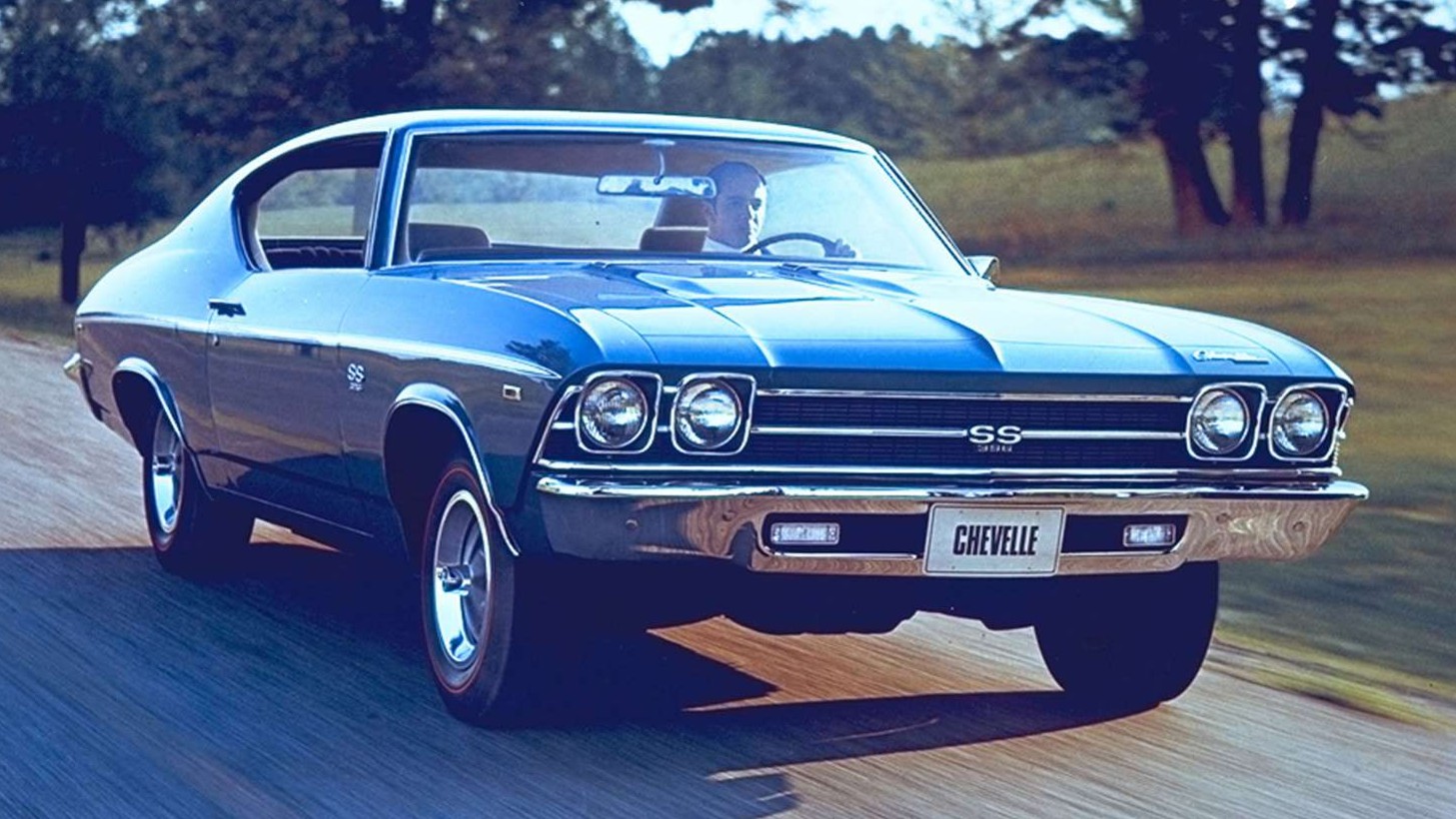
The second-generation Chevelle was another hit out of the park. Chevy shortened the wheelbase and formed the body into the classic long hood, short deck configuration so many love today. That alone would be enticing, but then Chevrolet capped off the vehicle’s now legendary design with voluptuous curves. Couple the design with the firepower under the hood, and you get what many people picture when you say “classic muscle.”
The Chevelle Hits The Gas
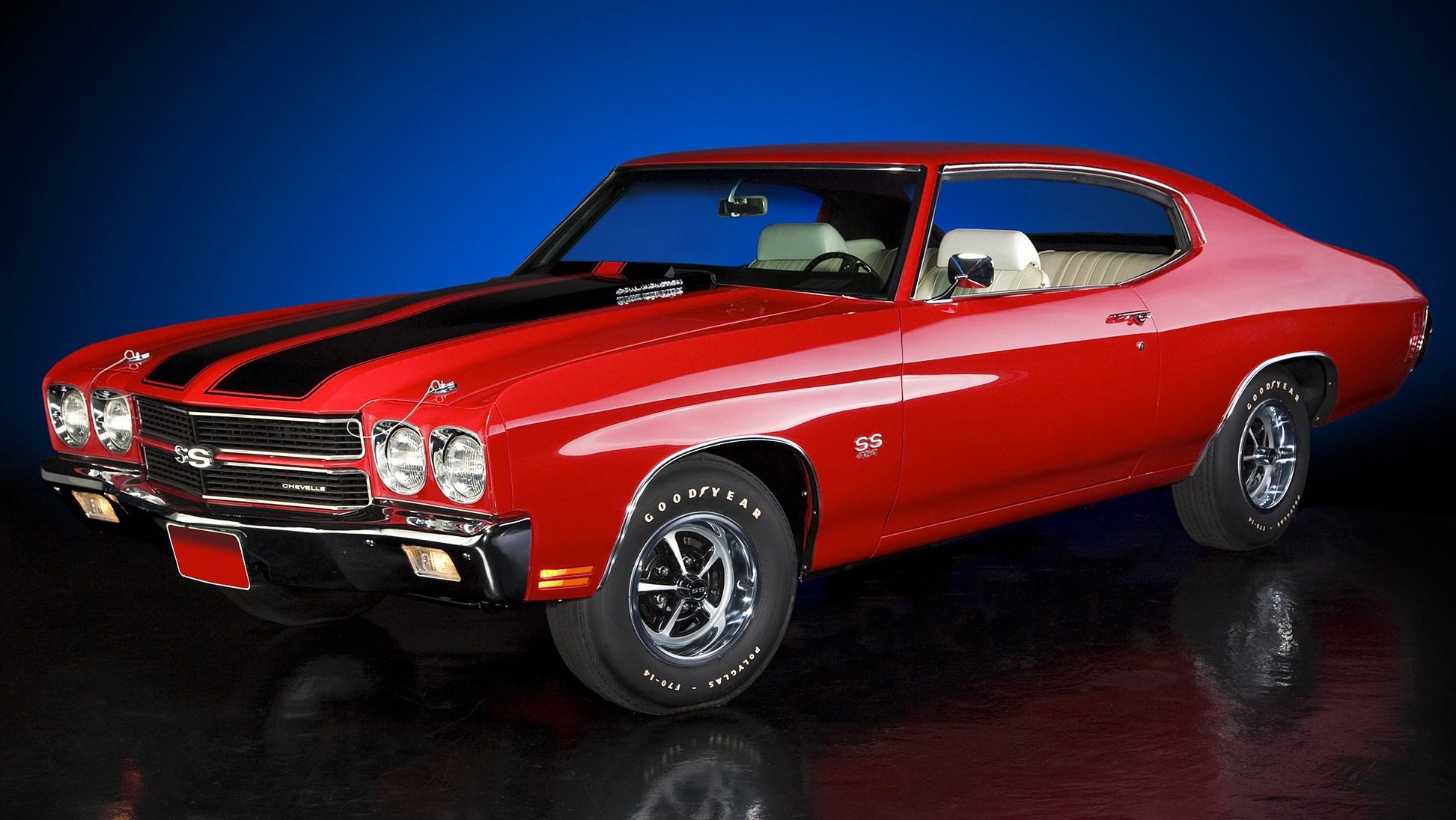
According to The Petersen, the name “Chevelle” is a mashup of Chevrolet and gazelle into a single name. The Chevelle was a star, with the Petersen noting that the vehicle was marketed as “a fine line between sport and pure luxury” and managed to sell 338,286 units in just its first year alone. But there was more in store. Chevrolet General Manager Semon Emil “Bunkie” Knudsen wanted to capture the magic that Pontiac had with its GTO, and the Chevelle was destined to join the muscle car ranks. My story from 2023 continues:
At its peak, you could buy the 1970 Chevrolet Chevelle SS 454. Check equipment group RPO Z15 and your Chevelle SS was locked and loaded with a 454 cubic inch big block V8. The base 454 had an LS5 V8 rated for 360 HP but you were able to opt for the solid lifter and high-compression LS6, which laid down a tire-shredding 450 HP. Of course, we’re talking about sneaky SAE Gross HP there, but the Chevelle SS 454 was the most powerful production Chevelle ever and the only GM vehicle with more power than the same year’s Corvette. Back in 2011, the Chevelle SS took second in a contest to crown the best Chevy vehicle of all time.
[…]
The Chevelle would go on to become one of America’s best-selling cars, and as I said before, eventually spawned one of Chevy’s most beloved cars of all time. How well did the Chevelle sell? In 1968, 464,669 of them found new owners. The Super Sport wasn’t rare either, with 62,785 Chevelle SS 396s going home that year. At the second-generation’s peak, 1970, 489,582 examples went home to customers in the United States.
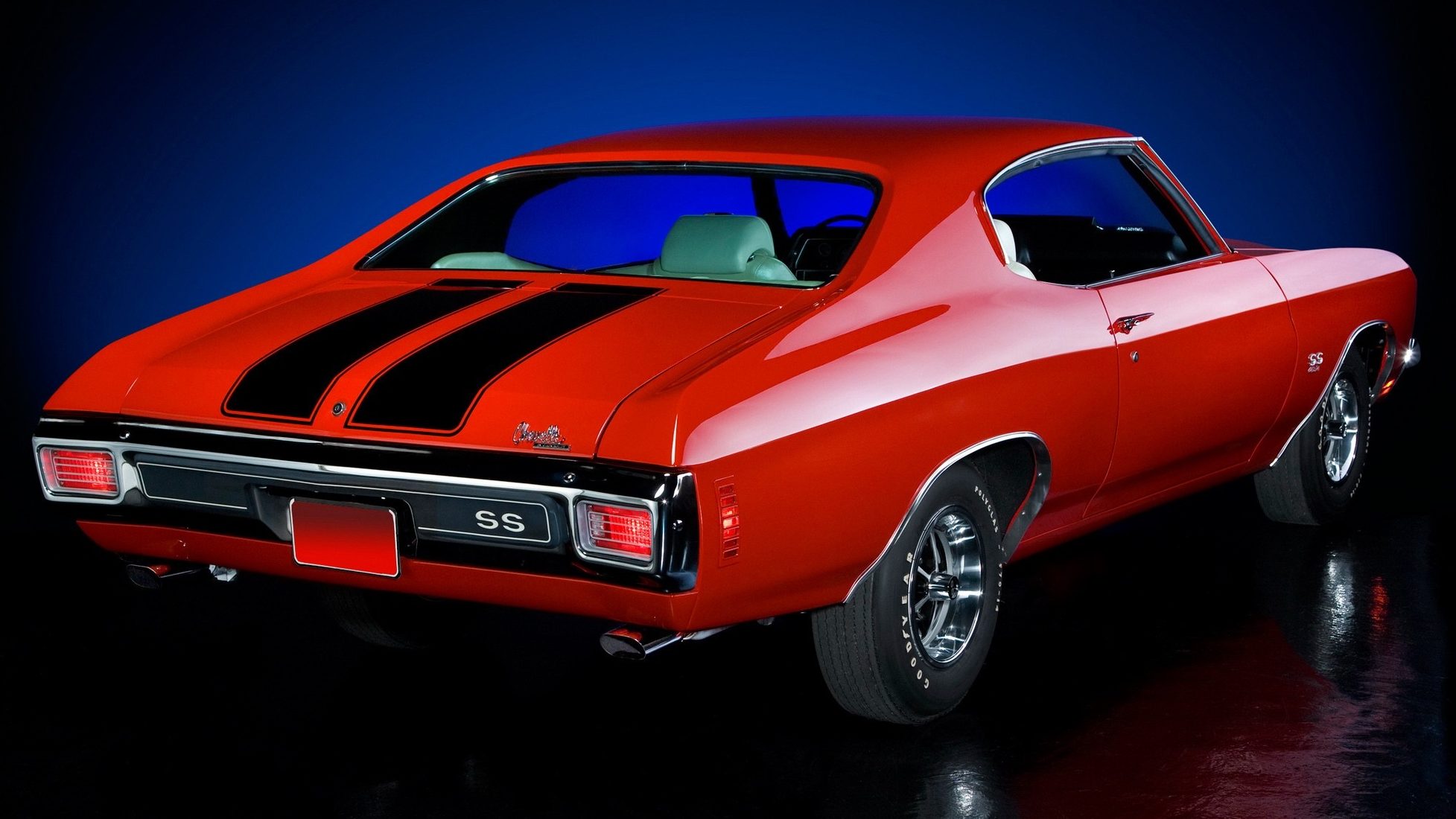
The Chevrolet Chevelle SS 454 handily dispatched the run to 60 mph in under six seconds and could complete a quarter mile in a touch above 13 seconds at speeds faster than 100 mph. That was blisteringly quick for 1970 and would even put some modern cars to shame.
The only problem is what I said before, and it’s that a well-equipped Chevelle SS ran you up to $4,800 or so, which was a decent pile of change back in 1970. Now, if you didn’t need the massive 454 V8, which was limited to just the SS model, you could have gotten a 396 SS for around $3,305, or $28,245 in 2025. If that was too expensive, for just two years, Chevy also offered a discount Chevelle muscle car, sort of.
The Heavy Chevy
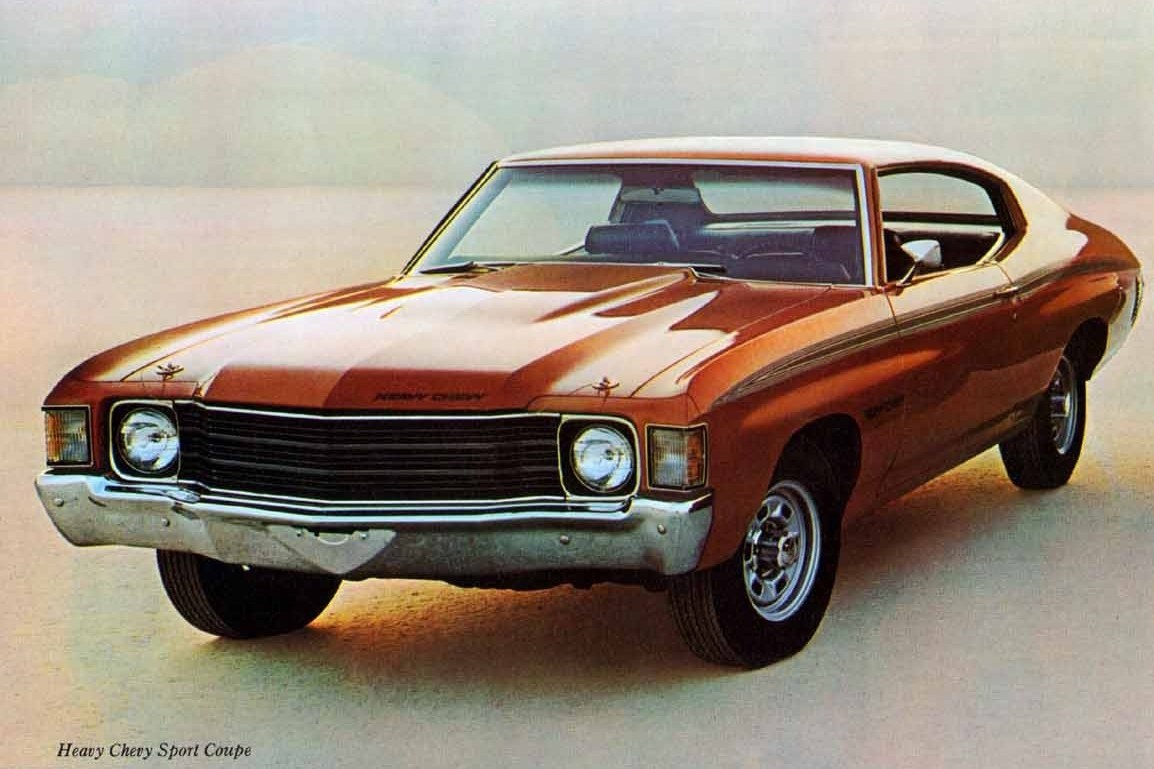
The Chevelle celebrated a spectacular 1970 drunk on both high power and healthy sales, but winds of change were on the horizon. In 1971, Hemmings writes, Chevrolet managed to move around 249,000 Malibus, 80,000 Super Sports, 43,200 Chevelle wagons, 35,600 base Chevelles, and 5,089 Malibu convertibles.
The Chevelle’s fortunes would begin to sour as it was hit by a punch of emissions regulations and a reconfiguration of power numbers. Chevrolet now embraced SAE net ratings for horsepower in addition to lowering compression. An LS5 454 V8 was rated at 365 HP gross, but then reported a net of 285 HP. If you paid attention to only the numbers and not the nuance, you might have been outraged.
As if environmental concerns and a change in ratings weren’t enough of an upheaval, as Mac’s Motor City Garage wrote, the prices of muscle cars were also technically inflated by the high cost to insure them. Suddenly, for many, the muscle car wasn’t as palatable as it had appeared only a couple of years before.
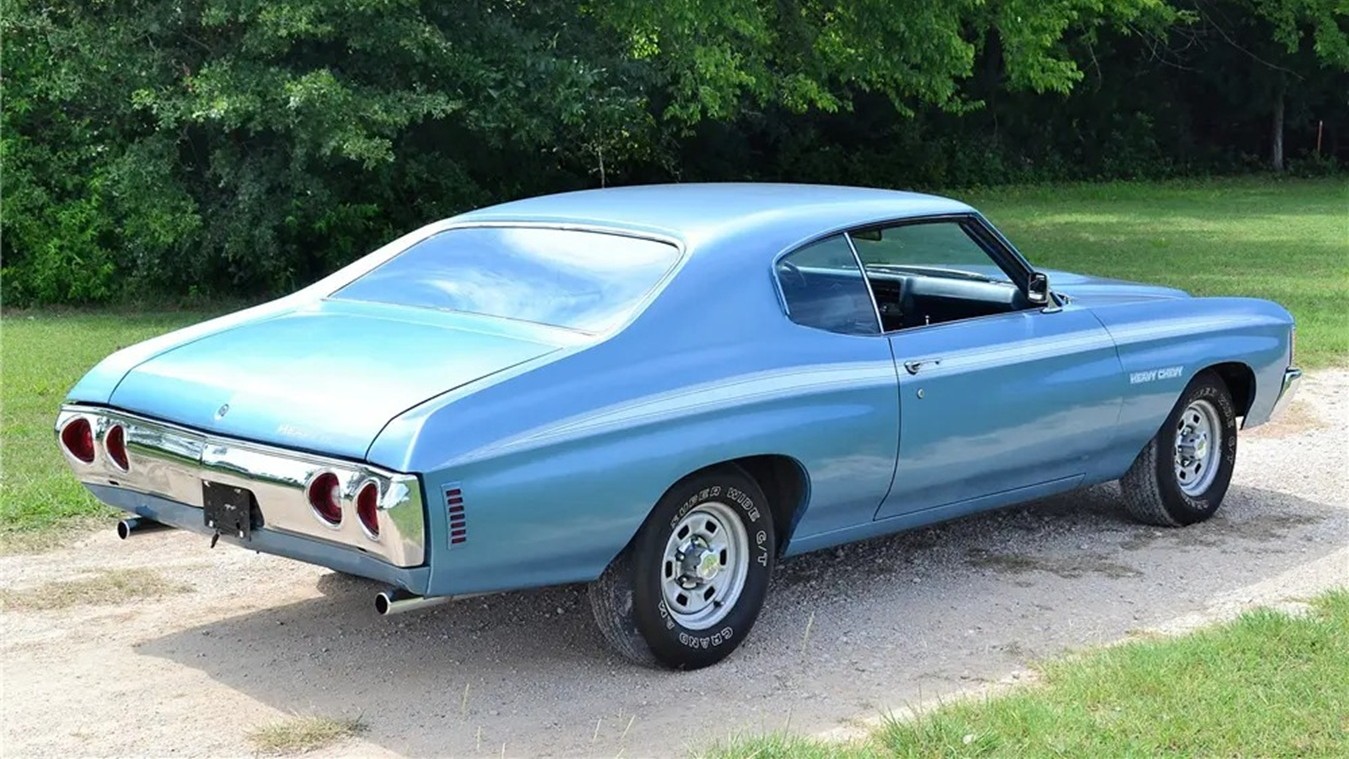
Chevrolet’s solution to all of these problems was to adapt and launch a sporty version of the Chevelle that could be had for less money, the Heavy Chevy, RPO YF3. Introduced in March 1971, the Heavy Chevy offered buyers the chance to at least get a taste of owning a muscle car, but without paying muscle car prices or insurance rates.
In its base form, the Heavy Chevy was purely a cosmetic upgrade to a base model Chevelle Hardtop Coupe. For $142.20 ($1,215 in 2025) over the base price of $2,807 ($23,989 in 2025), you got a domed SS hood with pins, Rally wheels without trim rings, a black grille, black headlight trim rings, stripe decals, and special badging. That’s it.

At least at its core, the Heavy Chevy package gave your standard car the looks of a muscle car. In 1971, the base engine was a Turbo-Fire 307 cubic-inch small-block V8 that fed from a two-barrel carburetor and fired 200 HP, or a whole stable short of a traditional muscle car.
The interior further drove home the point that you were getting a discount car here. The Heavy Chevy’s standard equipment called for rubber floor mats, a cheap bench seat, and very little garnish. That’s compared to the Malibu-based SS, which was marketed as a luxurious sporty car.
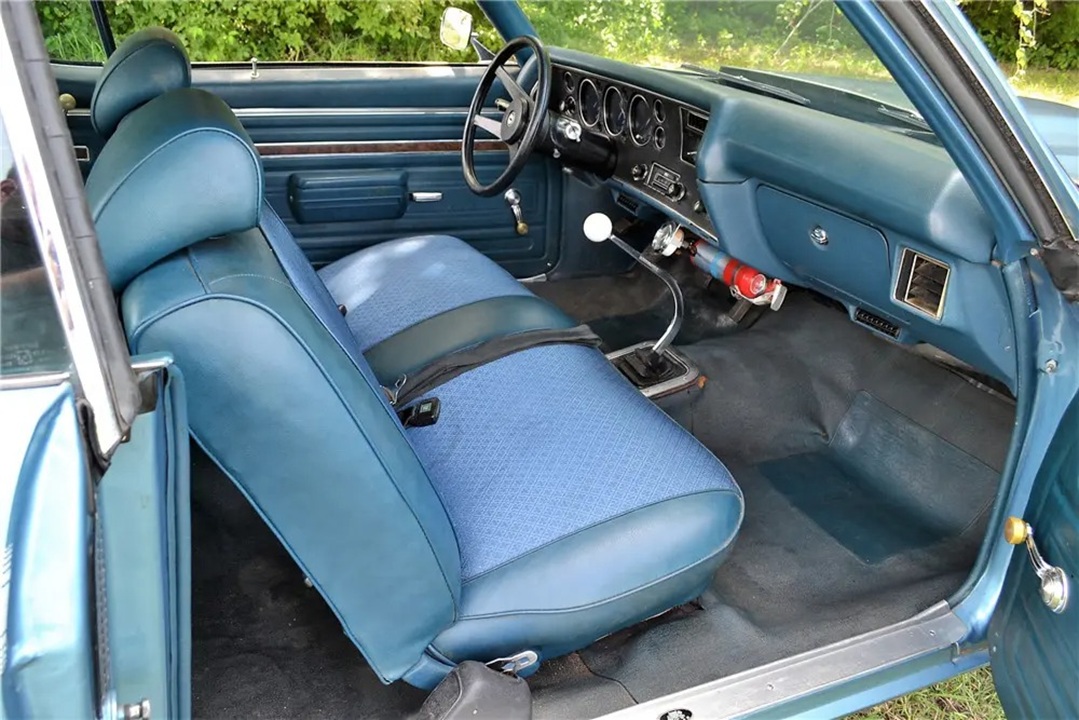
According to Chevy, the Heavy Chevy was “heavy on looks but light on price” and that the package was aimed at men and women who were single and were younger than 25 years of age. Further, Chevy told its dealers: “And they afford you an opportunity to close on those prospects who are looking for a “performance-car” image at an economy car price.”
Chevy pitched upsides to dealers as being a low cost of entry, low insurance costs, and low operating costs since the Heavy Chevy used standard engines. Further, Chevy said that Heavy Chevy buyers would benefit from high resale values. The Heavy Chevy would be sold alongside the Rally Nova, which also featured go-fast looks but cheap equipment.
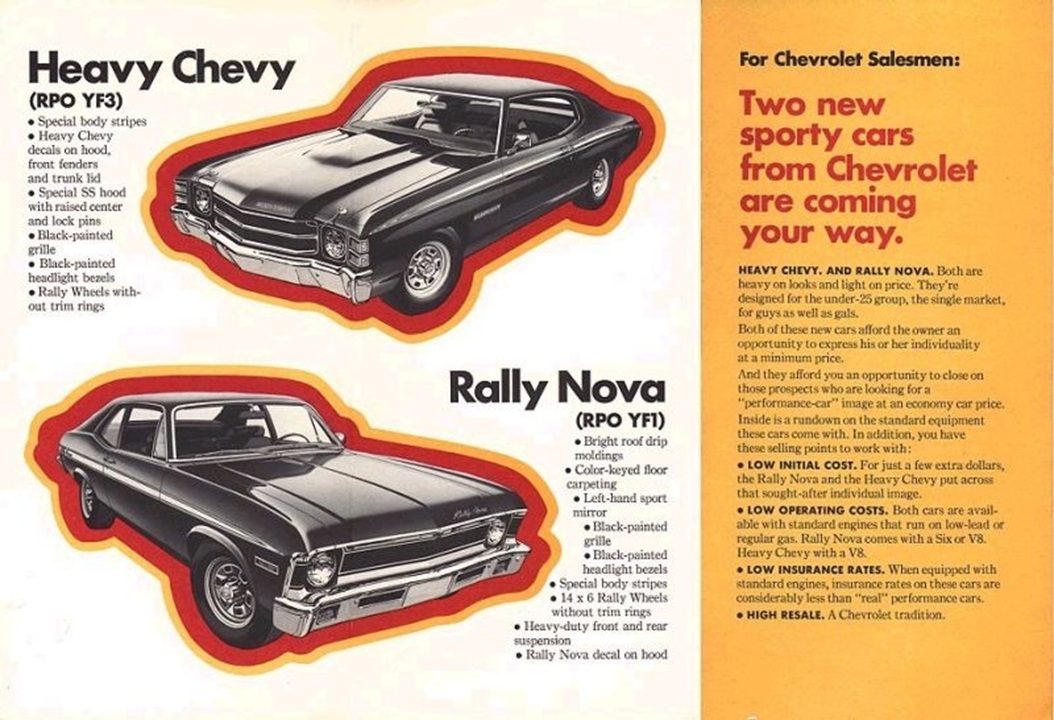
Mac’s Motor City Garage notes that, if you checked just the right boxes, it was possible to make a Heavy Chevy into a real muscle car. A two-barrel Turbo-Fire 350 and a four-barrel Turbo-Fire 350 were available, as was the Turbo-Jet 400, a 402 cubic inch V8. As noted earlier, the 454 was exclusive to the SS, and while the Chevelle was available with a six, it wasn’t available in the Heavy Chevy.
The four V8s were good for 200 HP, 245 HP, 270 HP, and 300 HP, respectively. That Turbo-Jet 400 also came with a Rochester four-barrel carburetor and an 8.5:1 compression ratio. Transmissions included a MC1 three-speed manual, a Muncie M20 four-speed manual, or a Turbo-Hydramatic 400 automatic. The Heavy Chevy was also available with the Chevelle’s other options, including the F41 heavy-duty suspension (which was standard on the SS), a Positraction limited-slip differential, upgraded brakes, upgraded instrumentation, and more.
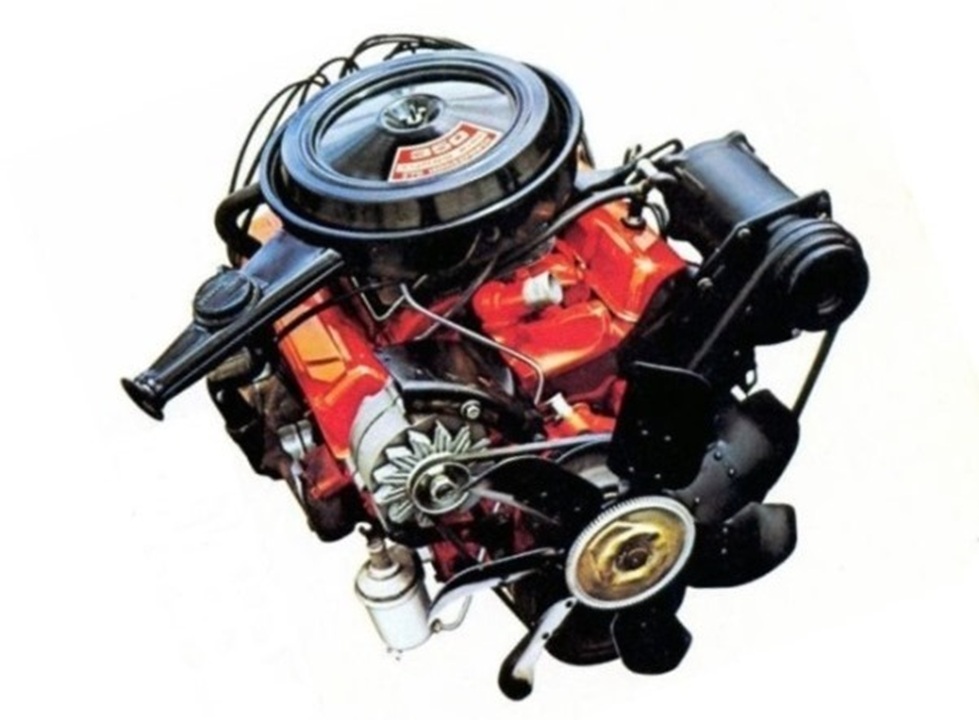
In essence, the Heavy Chevy sort of existed a kind of à la carte SS, where you chose how hard you wanted it to go. Of course, you couldn’t turn a Heavy Chevy into the flagship SS 454, but you were able to make something somewhat close to it for less money.
Rarer Than You’d Think
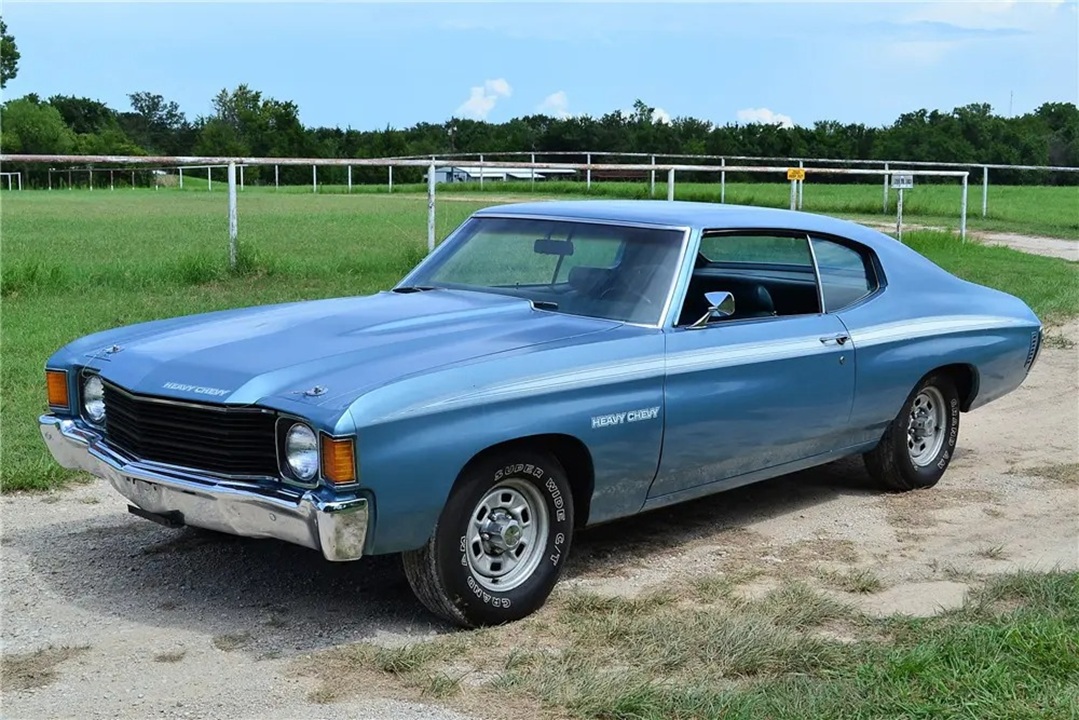
Chevrolet didn’t really intend the Heavy Chevy to be a rare model, but that’s how it worked out. Despite the low cost of entry, most people just bought an SS, anyway. Just 6,727 Heavy Chevy models were built in 1971, with 9,503 more following in 1972. Remember, Chevy sold over 80,000 Chevelle SS units in 1971 alone.
What’s really cool is that the Heavy Chevy hasn’t ascended to muscle car stardom like the SS. That means that, on average, you can find a Heavy Chevy for cheaper than a Chevelle SS. For example, there’s a supposedly numbers-matching and restored Heavy Chevy with a 350 for $46,750.
The coolest part about the Heavy Chevy is just the fact that it existed in the first place. Chevy knew that people wanted the Chevelle SS, but perhaps couldn’t afford one, so you got one of these instead. The sort of formula was repeated with the Pontiac GT-37, the discount GTO. In a way, this strategy is still alive today, as several brands sell cars with the looks of their performance flagships, but for a lower price. If you’re looking for something like a Chevelle SS but don’t have Chevelle SS money, try a Heavy Chevy.

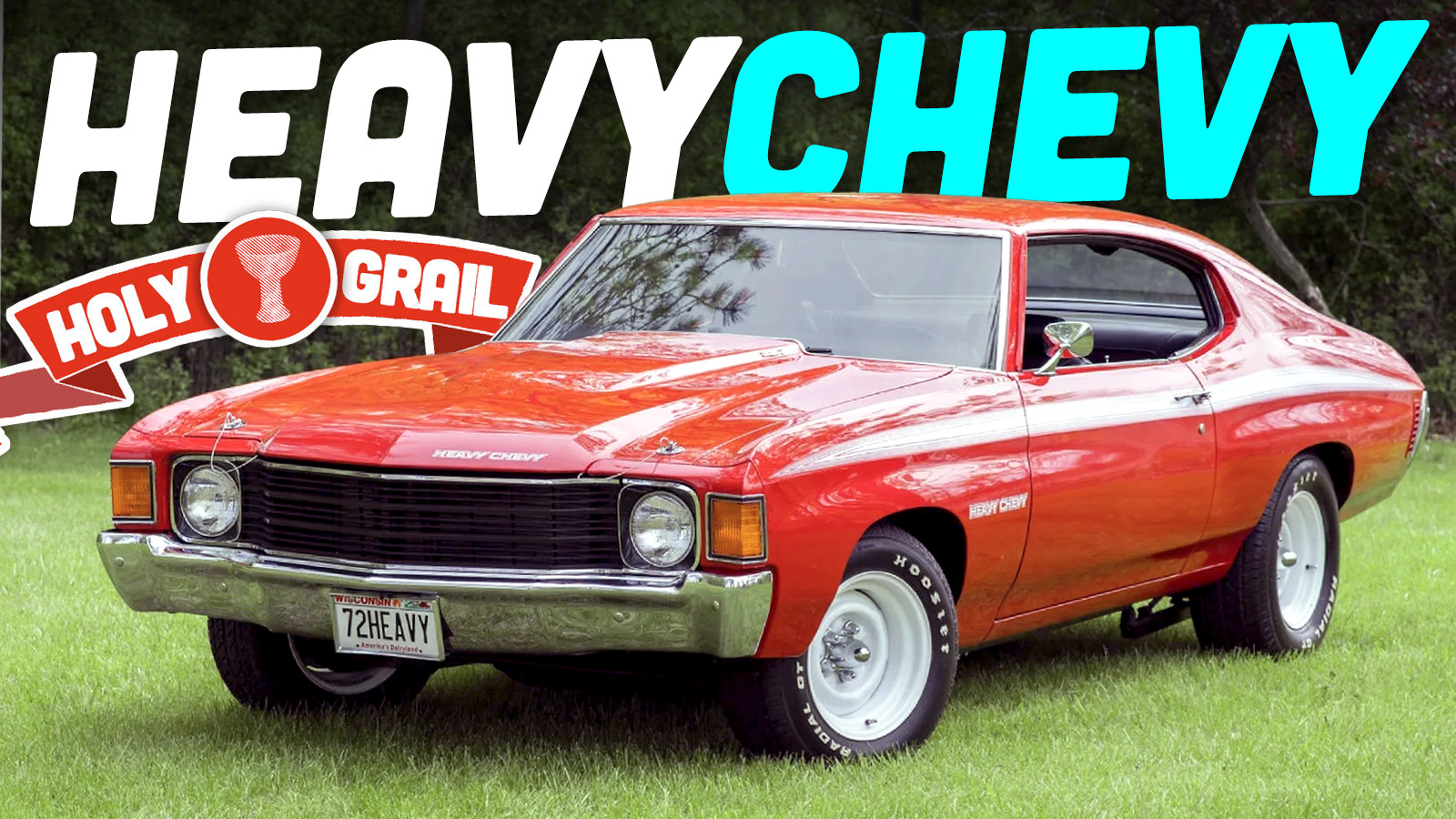





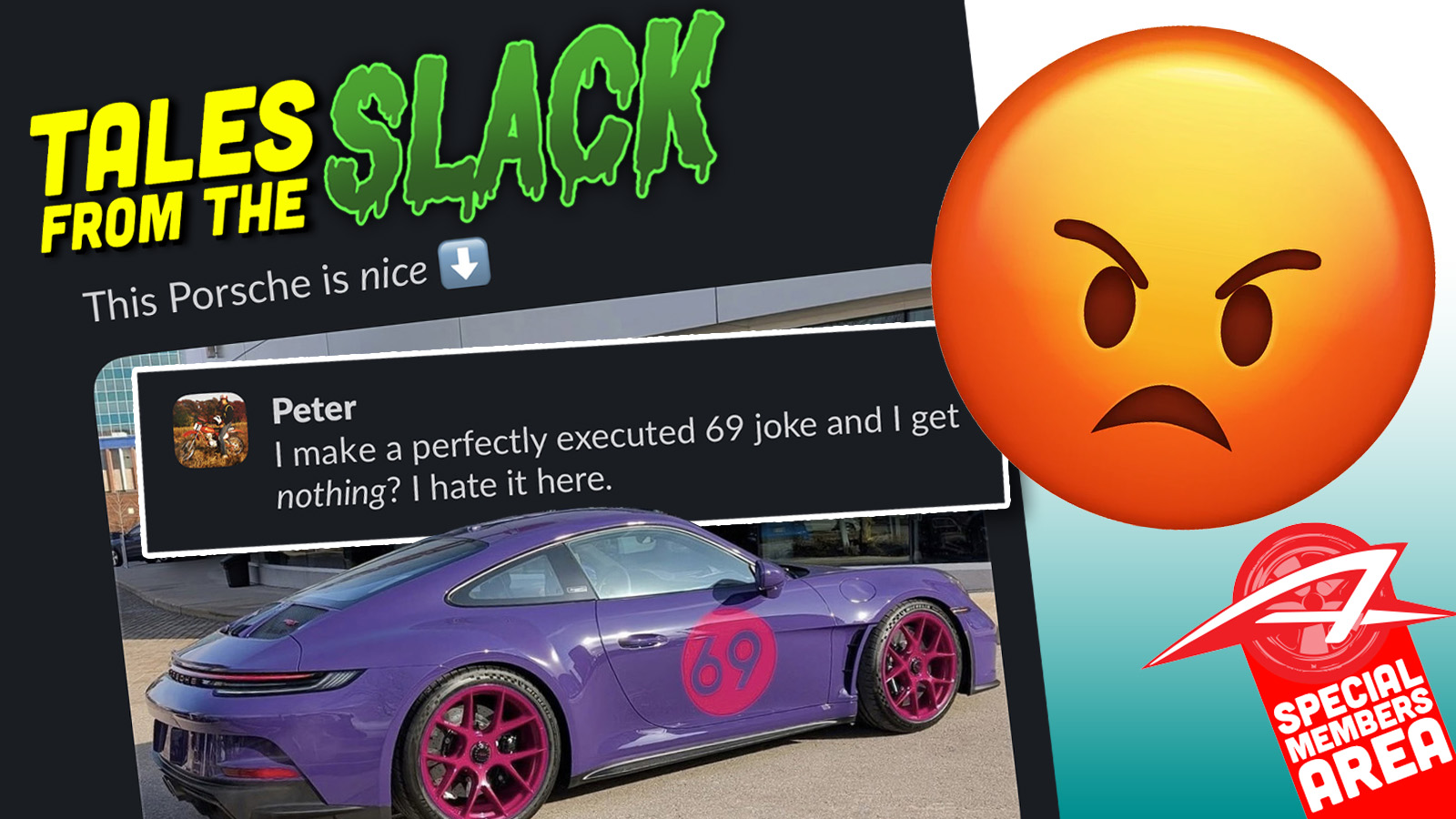

This article was kind of a two-fer, and I mean that in a good way!
Some remedial reading about the Chevelle and then new to me stuff about the Heavy Chevy.
My local PD had some pretty hot ’72 Novas with some sort of cop package. I did a ride along and we responded for a backup call and it was impressively quick for its time and well driven by the Sgt. behind the wheel. It was anything but a boat.
The Nova was about the same weight as the Camaro.
IIRC Nickey Chevrolet (in Mercedes orbit (Chicago)) offered a choice of police prepped Nova cruisers all over North America. My local city police (SW Ontario, Canada.) bought one and tried it out, I guess it was a hoot, but it was small compared with the cop package Biscayne and that was that.
Most of the same suspension stuff as well. But a 4 door option.
Rear seat passenger comfort isn’t a priority for these things, but front seat room for a big Bubba officer might have been a problem.
I got driven to kindergarten in my parents’ 72 Nova SS hatchback. They bought it new because my dad had a Camaro SS with a manual and my mom couldn’t drive it stick. So they got a “family” car. I really wish I had been in a position to buy it when they finally let it go. I look every now and then and they’re somewhat reasonable when compared with Chevelles or other more desired cars, but the rarity of that specific combo of SS and hatchback makes them out of my reach.
As we’ve told you in a number of other contexts, you could if David paid you what you’re worth.
I love the holy grail banner, it makes some people so mad to call any car a grail and I am here for the anger.
As a teenager in the 80s I just remember most of these cars (unless collector babied) were just junk by the end of the 80s.
The Plymouth Road Runner initially used the same template: stripper 2 door pillar sedan with bench seats. Also Dodge Super Bee.
Roadrunner had a standard 383, it was stripped down but actually had good power. This is all show, no go, which is how the original Impala SS was too
Roadrunner was all go, no show. Or stop.
I think it started the malaise era thinking, which was basically fake it to make it. sounds like you could opt for some go, but in the face of rising insurance cost s for muscle cars and fuel costs on the rise, I am sure that more of these got the 2 barrel 350 over anything else.
And I am sure plenty of them got an after market intake and Holley carb on day 2. Probably a second exhaust pipe as well.
Like the LeMans T37/GT37, and Olds Cutlass Rallye 350 these were insurance beaters.
Anything SS, 442, GTO (Mach1, GTX.. You get the picture) in the early 70s was going to cost you dearly on premiums. Heavy Chevy just showed up as a Chevelle as far as the insurance companies were concerned.
Thanks for taking me back. That’s peak GM styling. I had forgotten about the Heavy Chevy. Right out of high school a friend bought a ’72 Rally Nova 350 with the 2 barrel and 3 speed. It was so much fun but it literally fell apart underneath him. Amongst the other reasons American cars fell out of favor then was because they were put together with chewing gum and spit.
TIL Chevelle is Chevy and Gazelle put together. I never knew that!
Cool, I thought “Heavy Chevy” was just the name of a Hot Wheels car. The stripper with a big engine was the Mopar formula for years so it’s not surprising that GM tried the same approach. I think the 350 4 barrel with F41 suspension would be the best balanced car since the lighter engine and the handling suspension means it would corner as well as launch
I’ve never been a fan of big blocks in muscle cars, and pony cars even less so. More power, sure, but offset by significantly more weight over the nose and correspondingly worse F/R weight distribution. I’d happily take this with a nice 350/4-bbl.
I was thinking roughly the same thing – drop in a modern aluminum-block SBC and upgrade the suspension a little and enjoy my caveman sports sedan.
If this has been done, I’d love to see it, but I think it would be awesome if someone “restomodded” a Chevelle with a 310HP turbo I-4 from a current Silverado.
Would be interesting to compare weight distribution with both options. Pretty sure it’s leafs and a solid axle in back so I wouldn’t expect amazing handling either way.
IIRC Live axle, coils, trailing arms, staggered shocks at the rear, unequal A arms and coils up front.
It’s a big car, but depending on what you asked it to do and the suspension options picked it could surprise on a track, up to the limits of the brakes and tires.
I have seen twin turbo Duramax swapped Chevelle’s so you would think someone has had to go the opposite end with a lighter/smaller engine with high horsepower swap
This is why the true Holy Grails are the handful of ZL1 Corvettes and Camaros. All aluminium 427 big Blocks.
Pontiac did the same thing with their T37. Buick and Olds probably had their own version of a cheap muscle car.
Those 68-72 Novas are really good looking cars. Only 1″ shorter wheelbase than the A-Body cars too.
Novas were leaf spring rear, not related to the Chevelle/Malibu imagine a shared Camaro platform with an added 3 inches of wheelbase. 111″ vs 108″.
My great-grandmother (yes) who passed in the late 70’s or early 80’s had a (bought used) silver/gray Nova SS. I think it was a 70 or 71, and I think it was a 350, silver/gray, with black interior and a black vinyl top. It had sporty wheels, and was “jacked up” in the back per the fashion of the time. I recall a sporty steering wheel, but only a vinyl bench seat and automatic on the column. I was not knowledgeable about cars at that age but thought it weird an old lady would drive such a car.
As a kid back in the early 90s we called that stance BTLP (big tires low performance.) I remember a lot of G bodies getting that look.
A guy in high school had a Cordoba with that setup. I was late 80’s, so used PLC’s were prevalent as teenage cars and beaters.
I’d like to see the BTLP Landau top Cordoba version! What is PLCs?
“Personal Luxury Coupe”
I had a 77 Regal with a landau top.
Ahh gotcha. Good looking front end on that big boat!
I wonder how the Rally Nova sold? Same idea but cheaper still, lighter so a bit quicker with the same engine, and these were marketed to young singles who weren’t looking for a car to make them look more mature or they wouldn’t be looking at these packages anyway. So unless they insisted on a hardtop rather than a post coupe there was no reason to spring for the bigger car.
“Heavy Chevy” has to be one of the most 70s model names ever.
That would never pass marketing departments these days.
“SS-Line”
See also: MG Midget
What’s crazy is that you can buy cars with turbo’d 4 cylinder engines that are over 300hp net now. Of course, much of that has to do with tighter manufacturing tolerances, computerized engine control, variable valve timing, computer modeling (for modeling out more complete combustion in each cycle), better materials and alloys and so much more. Heck, even the automatics now typically get better mileage than manuals (but manuals are so much more fun and engaging).
But nothing really gets the heart going quite like the fumes of leaded gas without a catalytic converter coming from a big-ass American V8. Dat rumble.
“But nothing really gets the
heartASTHMA going quite like the fumes of leaded gas without a catalytic converter coming from a big-ass American V8″There… fixed it.
And EVERY one of those advances people have complained about as ruining cars. Luddites have hated every advance in cars for at least 35 years.
This stripping out of intermediates was a direct effect of the Plymouth Road Runner which was a quite successful affordable GTX strip. Another thing to blame the late Brock Yates for. I’m really a Chevy guy and I have to go “Beep! Beep!”.
Wasn’t the Heavy Chevy also a heavy 1/2 ton pickup in the ’80s?
I believe that was the Heavy Half.
Think you are right.
And that was a GMC. The Chevy was BIG-10 (styled in all caps).
With the Square Bodies I think it became the C15 as opposed to the C10 regular 1/2.
C-10 -20 -30 is a 2wd Chevy while the 2wd GMC’s were C-15 -25 -35.
There were definitely C15 in the Chevrolet C/K line at least in Canada.
Interestingly according to 2 Canadian market Brochures in Canada the GMCs were C-1500, -2500 ect.
https://oldcarbrochures.com/static/Canada/GM/1976%20GMC%20Pickups%20Brochure/image8.html
I was particularly surpsised about the last line on this Chevy Brochure that notes they are also available as a GMC
https://oldcarbrochures.com/static/Canada/Chevrolet/1983%20Chevrolet%20Full%20Size%20Pickups%20Brochure/image7.html
That’s interesting, thanks for the research.
I had a ’86 short box that just said Scottsdale on the front fenders and my friend had the same year black grill, base trim long box with heavy springs and it quite definitely said C-15 and Chevrolet on the fender badge. Maybe it was pieced together, a mystery, there was no AliExpress for not quite right badge purchases in those days. (-:
Or since they came down the same assembly lines the worker messed up and pulled the badge from the wrong bin, or the bin that actually had parts in it.
I had a Mazda 323, which was the base model, ie minimal chrome. However the passenger side interior door handle was chrome as found on the higher trim vehicles and the driver’s side had the proper black handle.
I guess it is possible that it arrived broken or was broken at the dealership, but chances are the person putting it together grabbed the wrong part for that particular car.
I’ll take mine as a Gentleman Jim, thank you.
As someone who grew up going to car shows in my dad’s ’70 SS, I always thought these were cool simply because of how few you saw. Every car show had rows of Chevelles but I’ve only ever seen a few Heavy Chevys ever. I do still see the Heavy Chevy badge on custom vans around here, though, which is fun.
There is a joke about obese members of the opposite sex acting offended by being offered a ride in a Heavy Chevy, but it would be rather rude to post it here.
Point of order. Cowl Induction hood doors open ONLY when the secondaries on the carb are opened. I m pretty tired of seeing every -single – one with the doors open all the time !
Is this one of the few times GM has officially allowed the shorthand “Chevy” into its advertising? Maybe besides the Chevy II.
They typically tend to insist on “Chevrolet”.
Most of their ads in the last couple of decades usually have the narrator use the word “Chevy” while the text always says Chevrolet.
Chevy Vans were badged “Chevy Van” back in the ’60s and ’70s.
Heavrolet Chevrolet?
No. Not a Holy Grail.
The less-wanted version is not better because fewer people bought it. Put this at an auction next to an SS with condition and miles equal and this sells for WAY less. It’s almost better to buy a base and mod it up to an SS as far as sales go.
The thing Autopians don’t understand about the Holy Grail is that people sought it out.
Nobody would be tricked by a weird option code grail (or a weird option code grail-shaped beacon, for that matter).
I disagree with your definition of a Holy Grail. It didn’t have to be a Grail when it launched to be considered one now. Often that very fact, its uncommonness, is what makes them desirable to own now, a key part of the definition of a grail I think. I’m not arguing that this should qualify or not, but I would list a CTS-V wagon as a grail, but they sure sold badly.
If there had been a CTS-AMLOST-V version with bad cloth manual seats and a van dashboard that sold less well, it would still be less desirable today.
A tiny bit more interesting than the better option everyone else chose, but still less desirable.
Remember that the whole genesis of this series was David Tracy lusting over rare base model manual Jeeps that nobody cared about when they were new, but are now sought after by Jeep people today.
Our definition of “holy grail” has always been pretty loose, which probably doesn’t help. But for the most part, “holy grail” is pretty much just our brand name for our historical pieces on relatively uncommon versions of common cars. Admittedly, our graphics guy stopped putting the Holy Grails banner in topshots, and I just stopped mentioning the series entirely for a while despite continuing to write about rare cars. But many readers have asked for a return to Holy Grails, so we’re giving it another try.
Unappreciated survivors.
“Rare But Don’t Care” is what a buddy of mine and I call these…
I know. I know. Every now and then I have to vent. I’m trying to avoid the obvious frustration contained in another “David Fumbles Fleet” post.
This is the internet, let’s please not hurt ourselves overthinking some light hyperbole.
Too late.
I suspect this is why the malaise era pivoted to personal luxury. Still sport looking, but lower insurance rates and true performance. Get the look, but not the motor, with better interior trimmings.
My 1968 Olds started life as a Cutlass S before I cloned it into a 4-4-2.
I think it’s super interesting because the Cutlass S was likely the Olds equivalent of the Heavy Chevy. The S (for Sport – so often confused with the Cutlass Supreme, which got “C|S” emblems, not “S” emblens) got you the 4-4-2 hood and 4-4-2 tail lights and basically nothing else. Mine came originally with a 2bbl equipped 350 and a column-shifted 2-speed automatic. The reason I think this is interesting is because, while I don’t have numbers handy, I feel like the S sold really well. You see just as many examples of the Cutlass S as you see regular Cutlasses. If anything, the base F-85 is the more rare of the group. I guess Olds buyers were more willing to get the trappings of a 4-4-2 for less money.
Also, it makes me feel super old when you point out that today’s mid-size cars are bigger than the 1960’s A-body cars. When I bought my Olds, people used to be surprised that it was considered a mid-sized car in its day since it was so much bigger than what was considered mid-sized in the 1990s (like the Malibu). Now we’ve gone full circle. It really struck me recently while I was driving my Olds how it doesn’t look as big as it used to in comparison to anything parked near it.
My ’78 LTDII was a mid size. It was also the exact same size as dad’s full size ’85 Colony Park wagon. Full-size shrunk to the old mid-size frames with better packaging. Mid-size shrunk to compact with better packaging. Ride in a full size ’75 or earlier car sometime.
I’ve done it. 🙂 Before I bought my Cutlass, I test drove a 1969 Delmont 88 convertible. It was delightfully huge. The tires squealed going around a pretty simple curve at less than 25mph.
I almost bought a ’75 Pontiac Grand Ville with a 455 as my second car… after my ’78 LTDII threw a rod bearing. Dad put his foot down on that one.
Ended up with an ’84 Fox Body LTD.
Size classifications are based on interior volume. Land yacht with a smallish interior = midsize.
Not so for mid-century marketing, nor in the public mind.
I dunno about that.
“Ford LTD II. The trimmer, sportier, mid-size LTD at a trimmer price.”
https://www.flickr.com/photos/coconv/5917552756
My understanding was these were built to provide a muscle looking car with lower horsepower due to insurance rates, not the cost of the car. If it didn’t code out as a SS, GTO, 442, etc, insurance was cheaper.
Perhaps you could read the article…
Mercedes, see also the Oldsmobile Rallye 350…
My first thought exactly..
My family had one, hardtop with a four speed when I was a little kid. It was my mother’s daily driver.